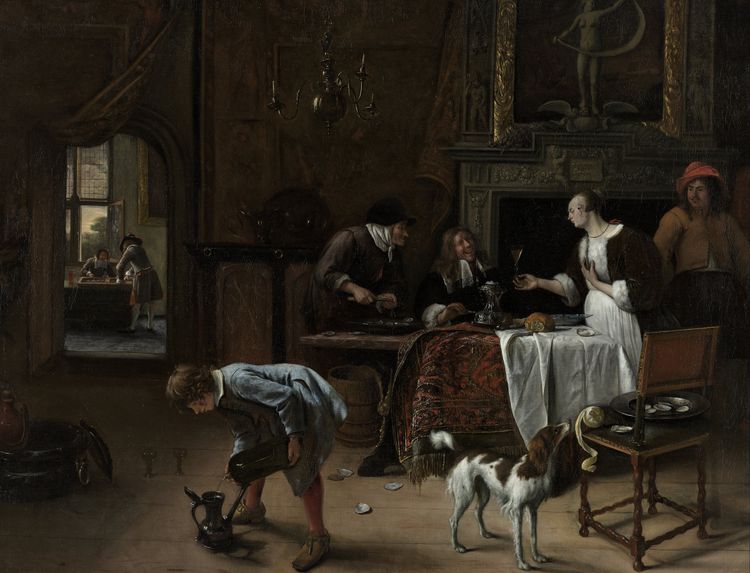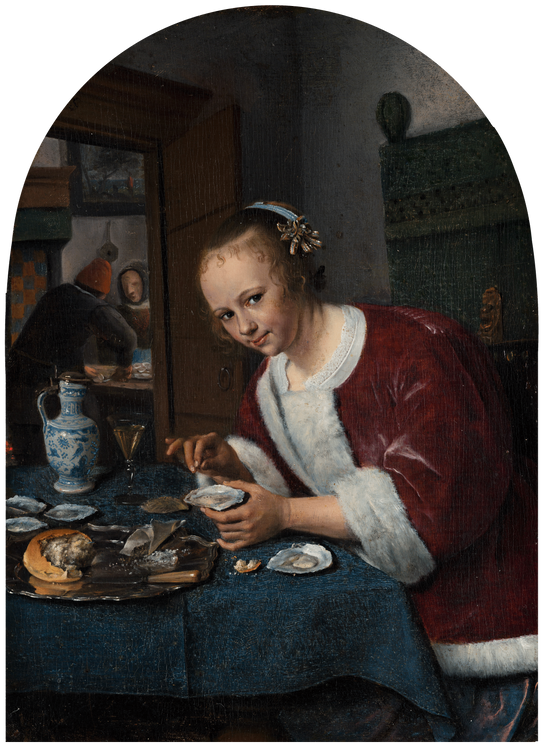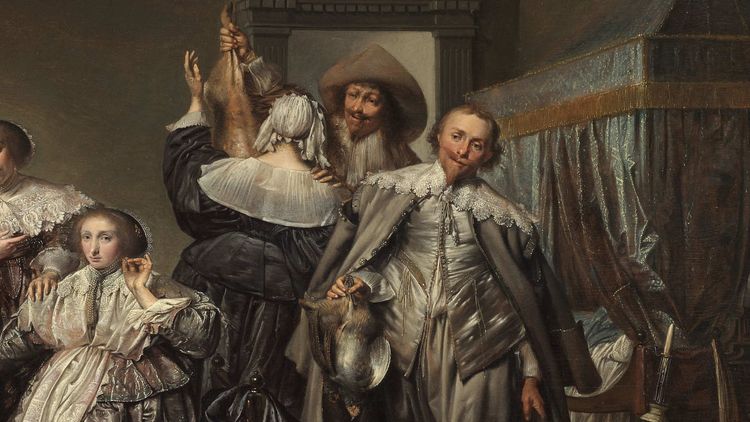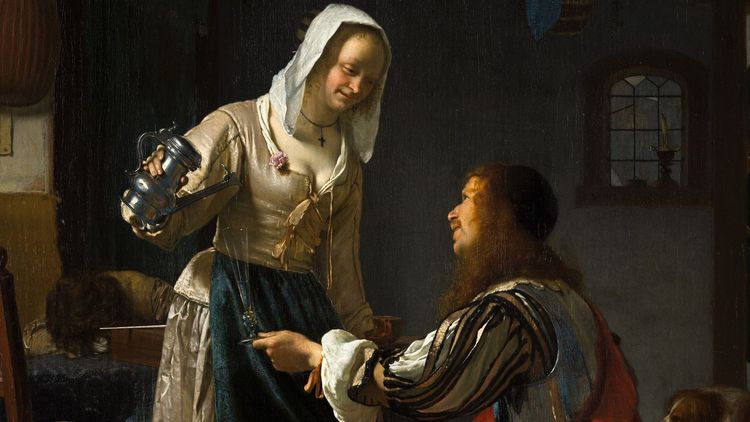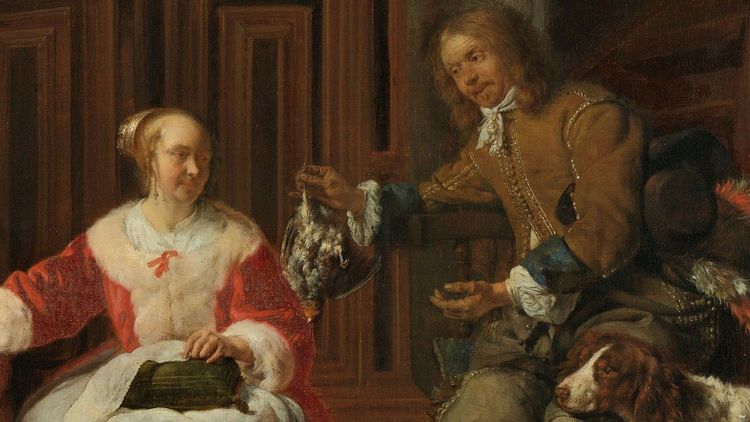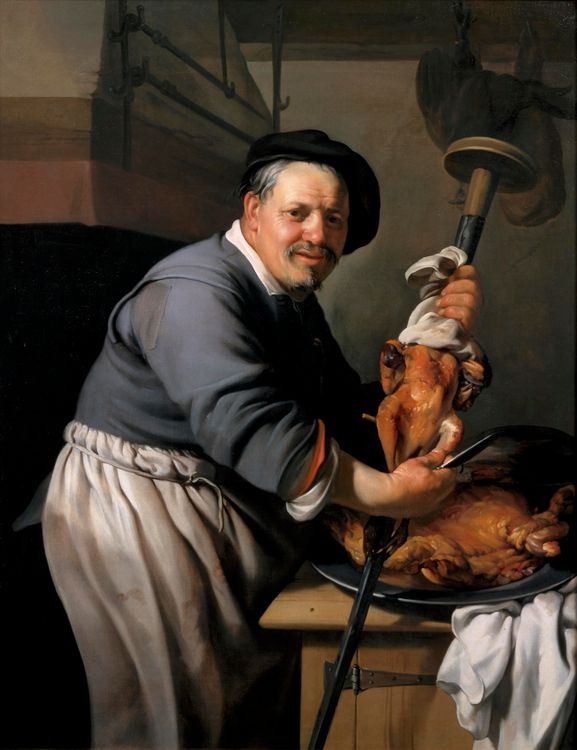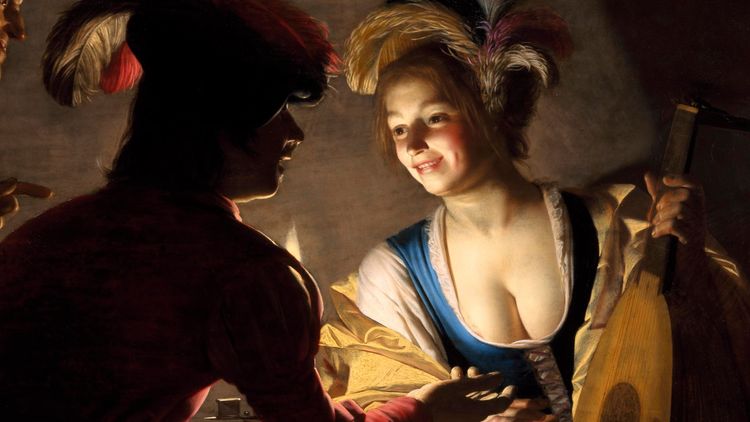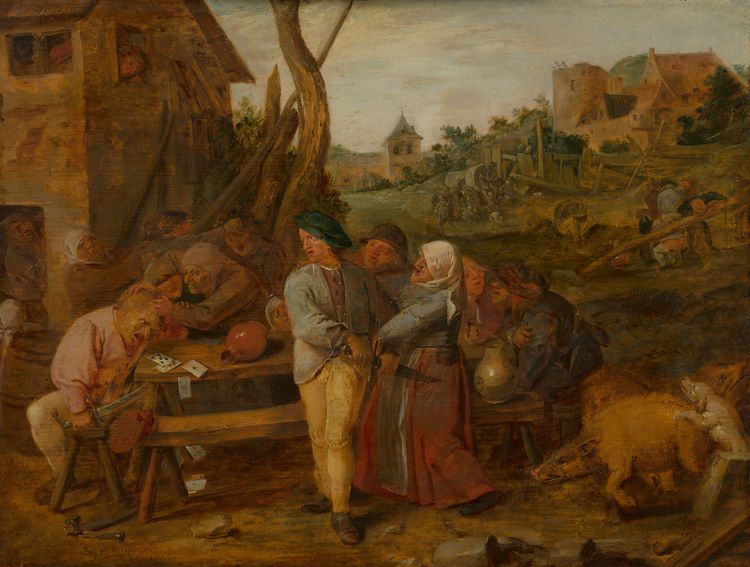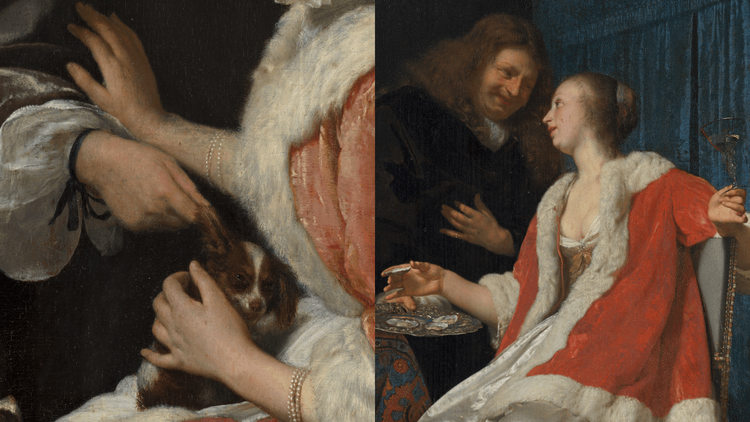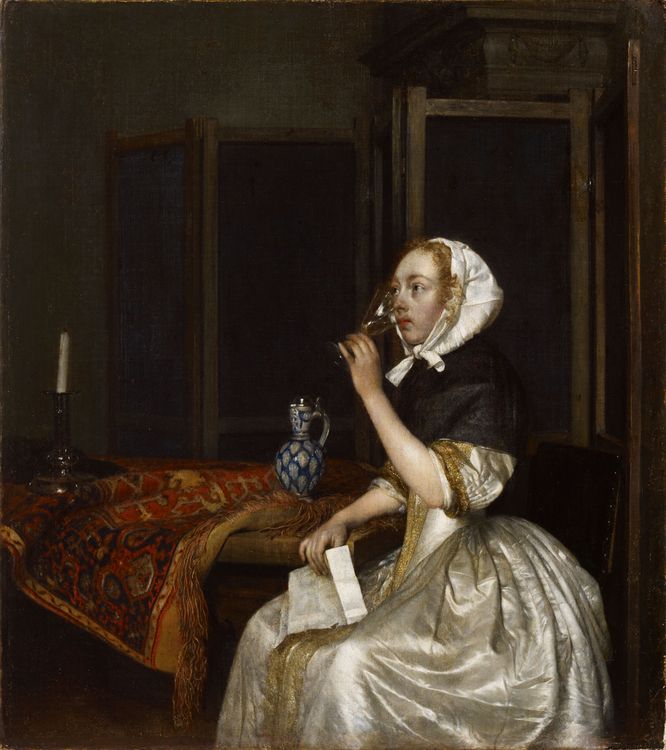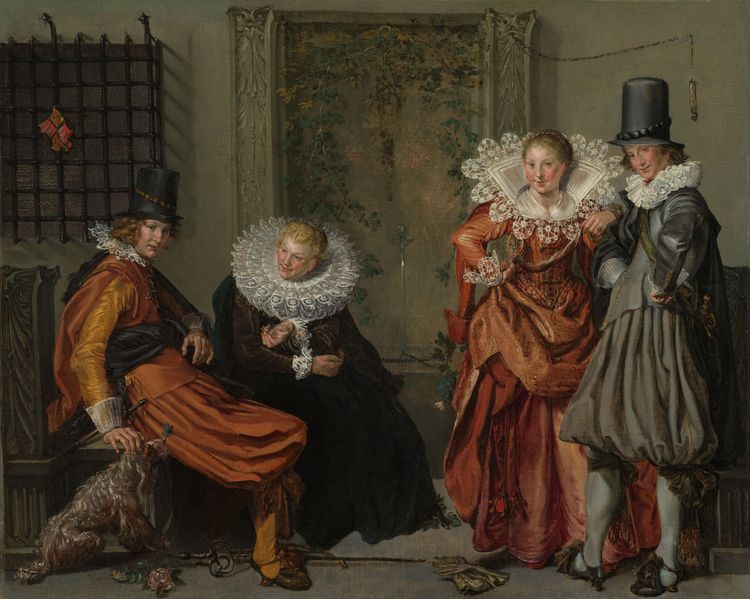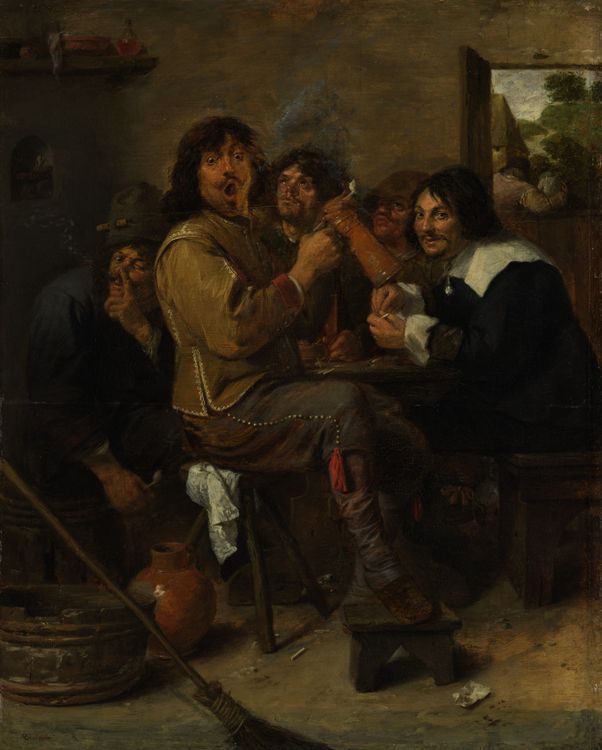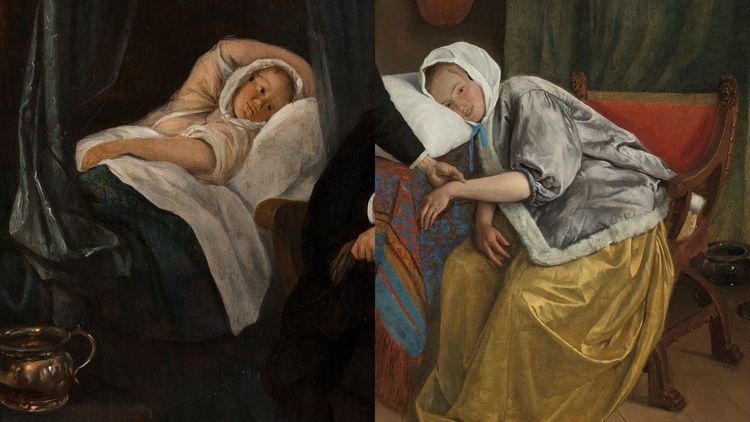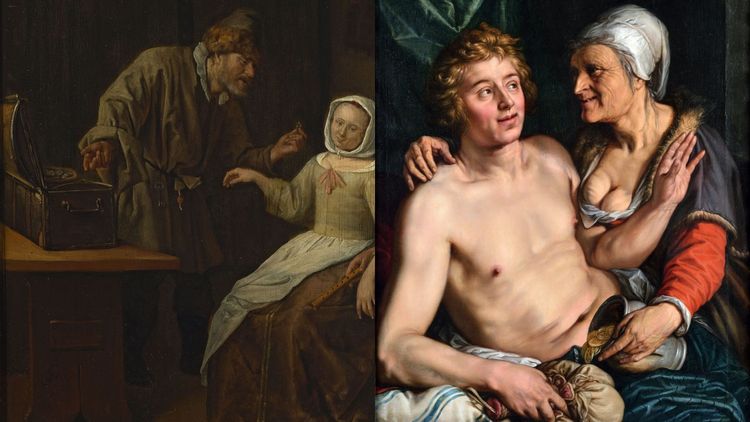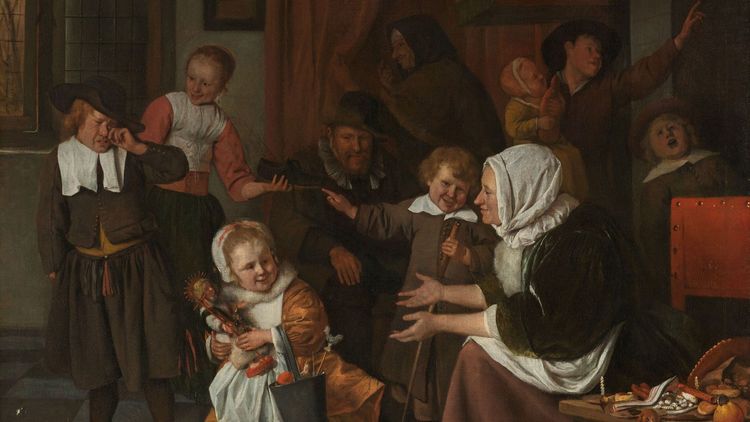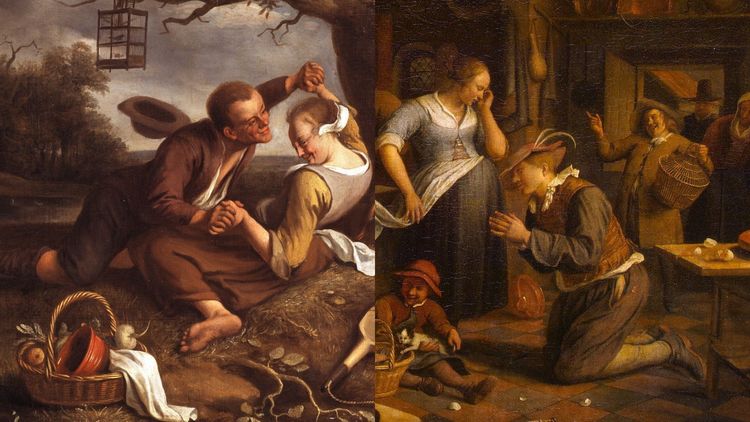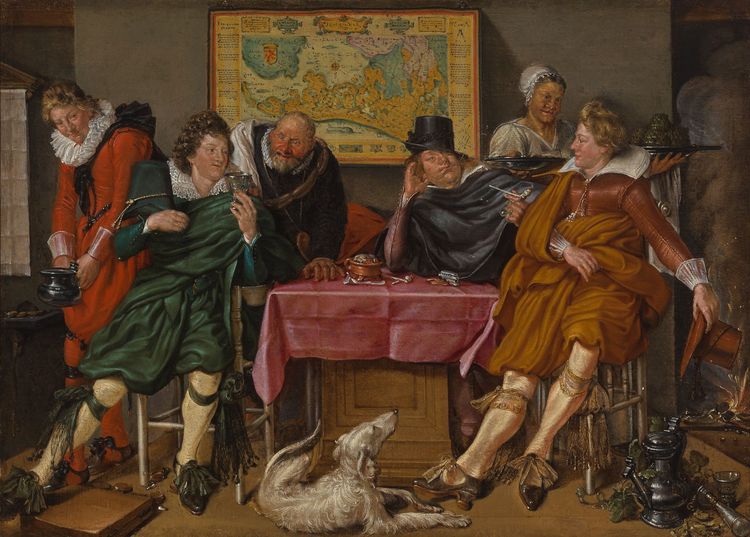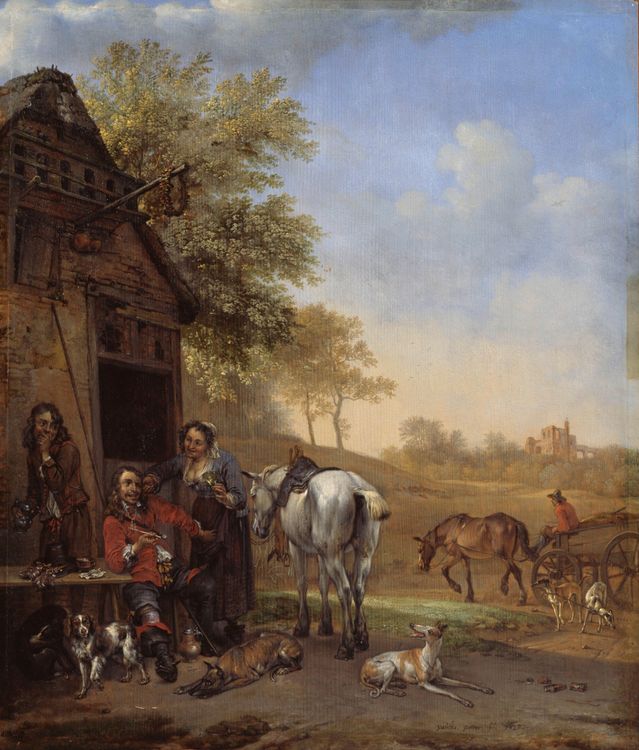Characteristics of genre art
That there has long been no good word for it immediately shows that genre art as a concept is difficult to delineate. There are some characteristics that come to mind, but these are therefore characteristics that we have now, in retrospect, come to associate with it. The artists themselves had no program, no set rules for genre art. On the contrary, they enjoyed great artistic freedom, and it was precisely because of this that genre art could emerge.
As we mentioned above, much genre art is remarkably cleverly painted; the Leiden school of "fine painters" is closely associated with this form of art. Johannes Vermeer's striking - and expensive - use of color also fits this preference for technical mastery. Many fine painters were specialists, who applied themselves to a particular theme and excelled in it. Godfried Schalcken for example, was a master at capturing candlelight. Others made much work of textiles, beautiful fabrics often depicted in detail.
Genre pieces took a lot of time; artists sometimes spent months on a single canvas. Viewers also liked to spend a lot of time on them. The painting told them a story, they looked at it for a long time and then discovered new details in it, new layers. A painter like Gerard ter Borch really made a game of making his paintings multi-interpretable. Genre pieces are full of symbolism. Whoever speaks the language of symbols can "read" the painting from beginning to end. That is what Bas Zevenbergen does in the fun part of art.
Genre painters were, in a sense, the cabaret performers of the Golden Age. They held up a mirror to their contemporaries. Nor did they spare their patrons. Jan Steen portrayed a mayor with two beggars on his left hand - not exactly the portrait the man must have had in mind. Pieter van Roestraeten mocked the wealth of his time - and thus also that of his patrons as well as his own. That irony makes the genre pieces still witty even for the modern viewer.
Finally, genre pieces hung at home. Not in churches, not in public buildings, but in the homes of the buyers. So that also means that by no means everyone got to see them. They were intended for a limited audience of enthusiasts. They could be a little spicy, it didn't matter. After all, you had control over who got to see the painting.
Genre art & the fun part of art
In the virtual museum of the fun part of art hangs our very best genre art and you get to look at it. Bas Zevenbergen, enthusiast and observer, tells you what he sees and what he thinks the artist may have meant. But of course you are free to think of something else. That is what makes genre art so fun and so modern: you can go in many directions, it is a form of art that cannot be pigeonholed. This art is as multifaceted as the humor of the Dutch Golden Age - and it was certainly multifaceted.
The fun part of art makes you laugh at the Dutch of the past and the Dutch of the present. The fun part of art makes you laugh at yourself. After all, what has changed? It is precisely because we recognize ourselves so well in the people of the past that history comes to life in genre art. After a visit to this virtual museum you will walk past the old stepped gables in our cities in a different way. Now you know what it was like there, once...
Also see
The Rijksmuseum's catalog "Tot lering en vermaak" provides a lot of background. If you want to read more about genre art after your visit to our virtual museum, you can visit the DBNL for this book: Catalog "Tot lering en vermaak".


